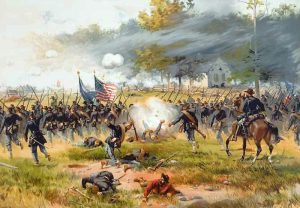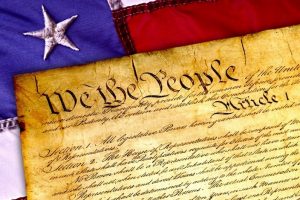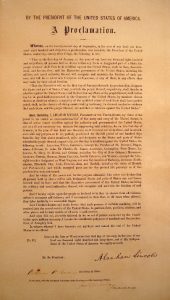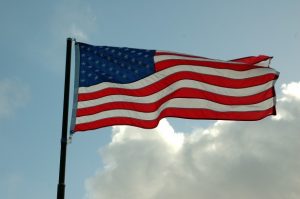There was very good news recently on the issue of Confederate-themed memorials, symbols, monuments, celebrations and military bases: according to NPR, all nine Army bases that were named for Confederate generals have now officially been renamed. Journalist Jay Price reports, “Fort Gordon in Georgia is now Fort Eisenhower.”
As we noted earlier, decades after the end of the Civil War, movements were afoot in the US to promote the so-called “Lost Cause” narrative, honor soldiers and even leaders who fought for the Confederacy (secession being an insurrection), stage pro-Confederacy reenactments, have pro-Confederacy dates on their State and local calendars, and name military bases after men who attempted to overthrow our united nation.  We noted that mayors, city councils, educational institutions, government offices and other entities have been taking steps to remove monuments, rename streets and buildings, create new exhibits, museums and memorials to correct the record, and strive to educate the public about the issues.
We noted that mayors, city councils, educational institutions, government offices and other entities have been taking steps to remove monuments, rename streets and buildings, create new exhibits, museums and memorials to correct the record, and strive to educate the public about the issues.
Fort Eisenhower, formerly Camp Gordon, was named for Confederate Lieutenant General John Brown Gordon, in 1941 (long after the end of the Civil War and Reconstruction). Gordon was a very successful general in Robert E. Lee’s army. After the War, Gordon was elected a US Senator as well as Governor of Georgia, in addition to being the first commander-in-chief of the United Confederate Veterans. As is always the case, his biography is not entirely negative; however, it does raise the issue how someone who was so critical to the causes of slavery, defying the Constitution and trying to sever the Union should serve in elected office. (See our offering on Section 3 of the 14th Amendment, which was enacted in 1868 precisely to ban insurrectionists from holding office again.)
Melt-Down in Charlottesville
In a related development, the “statue of Confederate General Robert E. Lee in Charlottesville, Va. is being melted down into an inclusive art display.” This statue, many of us recall, was the focal point of the tragedy in 2017 when, during a white nationalist rally, neo-Nazis and white supremacists tried to stop the city’s plans to remove the statue. 32-year-old Heather Heyer was killed when one of the demonstrators, an avowed admirer of Adolf Hitler from Ohio, plowed his car into the group of counterprotesters of which Heyer was a part. Then-President Donald Trump later famously exclaimed that there were “very fine people on both sides” of the Charlottesville clashes; Trump has persisted in supporting white supremacists.
Because of the fear of repercussions against the workers, the foundry work is being done out-of-state, and reporters agreed not to reveal its location. (What a sad commentary on our present situation…) Charlottesville won a number of legal battles against groups such as the Sons of Confederate Veterans, who objected to the statue’s removal. The project, called Swords Into Plowshares (see Isaiah 2:4), is being organized by Jefferson School African American Cultural Center in Charlottesville. The plan is to create a more inclusive public art installation from the ingots; the search is on for an appropriate artist. Because the statue weighs 10,000 pounds, the project will take another few weeks to complete.
Backlash and Objections
Ideally in the US, differences of opinion are handled civilly – through dialogue, debate, peaceful demonstrations, the vote, etc. The issue of the removal of Confederate memorials and the like should, ideally, be handled the same way (certainly not with the violence exhibited in Charlottesville). Some critics have raised objections to the removal initiatives (a movement that has grown over the past few years):
- history should not be denied, no matter how complicated;
- the memorials are an essential part of Southern heritage;
- removal starts a slippery slope to the removal of monuments of any currently problematic person;
- Confederate memorials can be used as educational tools to fight racism.
Some of these objections have merit and are being taken into account.  The memorials are an essential part of Southern – even American – heritage, but there are better, less hurtful, ways of telling those stories. Confederate soldiers and leaders should not, for instance, be honored as if they were heroes – such as naming schools, government buildings, or military bases after them, or deliberately celebrating them in positive public demonstrations. Memorials can be used as educational tools to combat racism – but not without specific explanations about context; perhaps the best venue for these educational initiatives is within museums, textbooks, and signs in public places.
The memorials are an essential part of Southern – even American – heritage, but there are better, less hurtful, ways of telling those stories. Confederate soldiers and leaders should not, for instance, be honored as if they were heroes – such as naming schools, government buildings, or military bases after them, or deliberately celebrating them in positive public demonstrations. Memorials can be used as educational tools to combat racism – but not without specific explanations about context; perhaps the best venue for these educational initiatives is within museums, textbooks, and signs in public places.
Slippery slope? That argument is considered a fallacy in philosophical circles. In the political realm in the US, conservatives argue that socialism (or any social safety net program that critics label socialist) is a slippery slope to communism. Using the slippery slope argument is often a scare tactic that we should always be aware of. There may be a point, of course, about a “currently problematic person.” Maybe we as a nation should think hard before we name anything permanent, large or expensive after a fellow flawed human being!
Other objections to the removal of Confederate memorials and monuments reside, one can argue, in the radical reaches of white nationalism/white supremacy (which, unfortunately, has seeped into our political mainstream over the past decade). The Great Replacement Theory, for example, has a long, disturbing history in the US. In short, it can be defined as “white people’s fear about being replaced by ‘outsiders’ and migrants of ‘inferior’ backgrounds,” which includes people of color, LGBTQ+ persons, and Jews. This belief system carries over into cognate fears that the left is rewriting history (to the detriment of whites) and even brainwashing our children.
Final Thoughts
The removal of Confederate memorials and monuments should be put into a larger social, political and even ethical context. This context, we might consider, can start with empathy.
- The Confederacy, at base, had as one of its main goals the preservation of the institution of slavery – a deplorable institution primarily affecting Africans and their descendants. Most historians agree that the Civil War was fought over the issue of slavery (although Southern states argued that it was about states’ rights). The Confederate flag and all the memorials, monuments, celebrations, names, etc. of the Confederacy are symbols of the way of life that depended upon slavery. Millions of Americans today are descended from those slaves. If we whites put ourselves in their place, how would we feel if we were surrounded almost everywhere by symbols and remembrances of a heritage of oppression and enslavement? (An analogy – not only for Jews but for all of us who know the history of the Holocaust and World War II – is the swastika. How do we feel when we see a swastika, especially in a way that celebrates what it represents?…)
 It is likely that many (most?) African Americans experience symbols of the Confederacy in a deeply negative way. These Americans are our neighbors, friends, coworkers, even relatives. Do we not want to honor their feelings, aspirations and values, perhaps especially when their skin color and backgrounds often, to our national shame, can lead to threats against their very lives?
It is likely that many (most?) African Americans experience symbols of the Confederacy in a deeply negative way. These Americans are our neighbors, friends, coworkers, even relatives. Do we not want to honor their feelings, aspirations and values, perhaps especially when their skin color and backgrounds often, to our national shame, can lead to threats against their very lives?
Symbols have power. Why should we not want to elevate and celebrate symbols that inspire and enrich us and make most of us feel good, not bad (even afraid)?
In addition, those of us who love history and learning new things have found the exploration of the experiences of those from a dissimilar background from ours to be fascinating – and not particularly threatening. Yes, some of the new information can be disturbing, but that does not automatically translate to shaming (unless we should feel guilty about our own personal actions). One of the main purposes of learning history is to avoid making the mistakes of the past.
Putting Confederate memorials in proper educational places such as museums – and melting some of them down to create plowshares from swords – enhances and enlarges our national story. If we keep open minds and show some generosity toward those different from us, it moves us toward what is embodied in the Preamble to our Constitution: “in Order to form a more perfect Union.”
